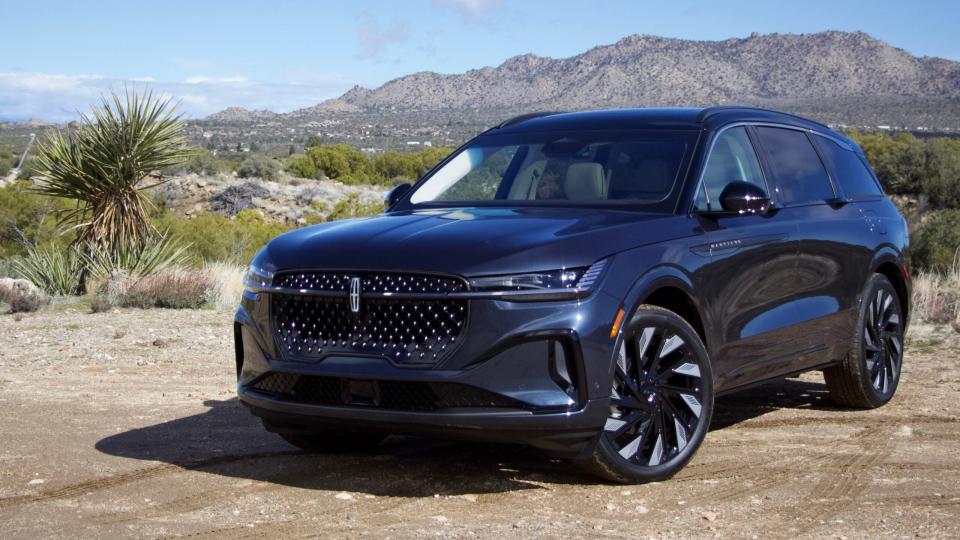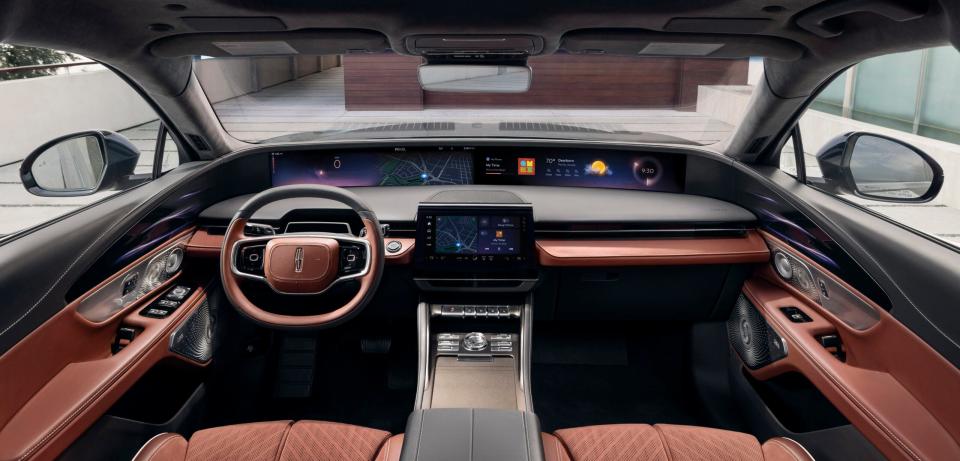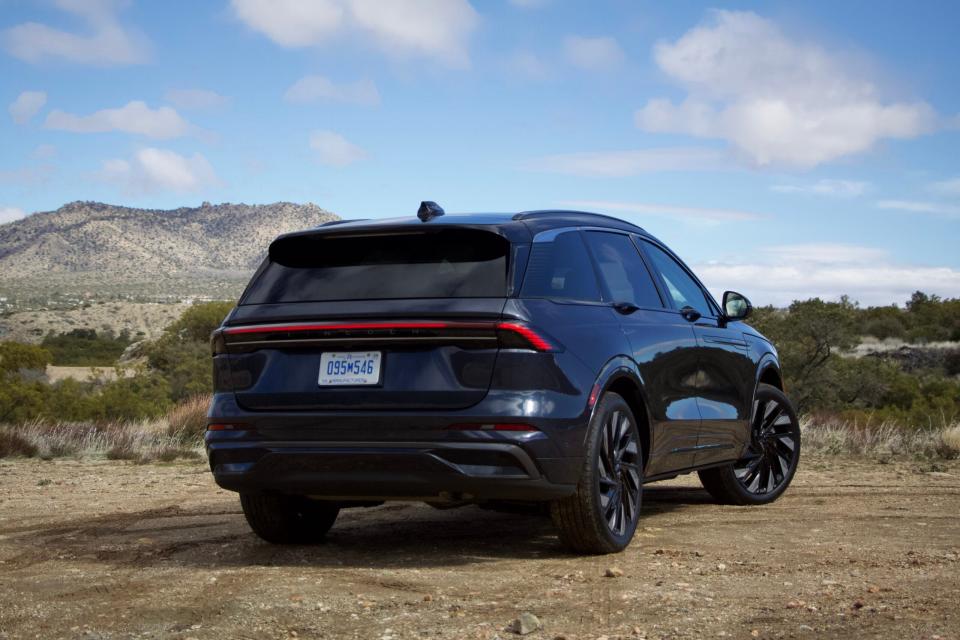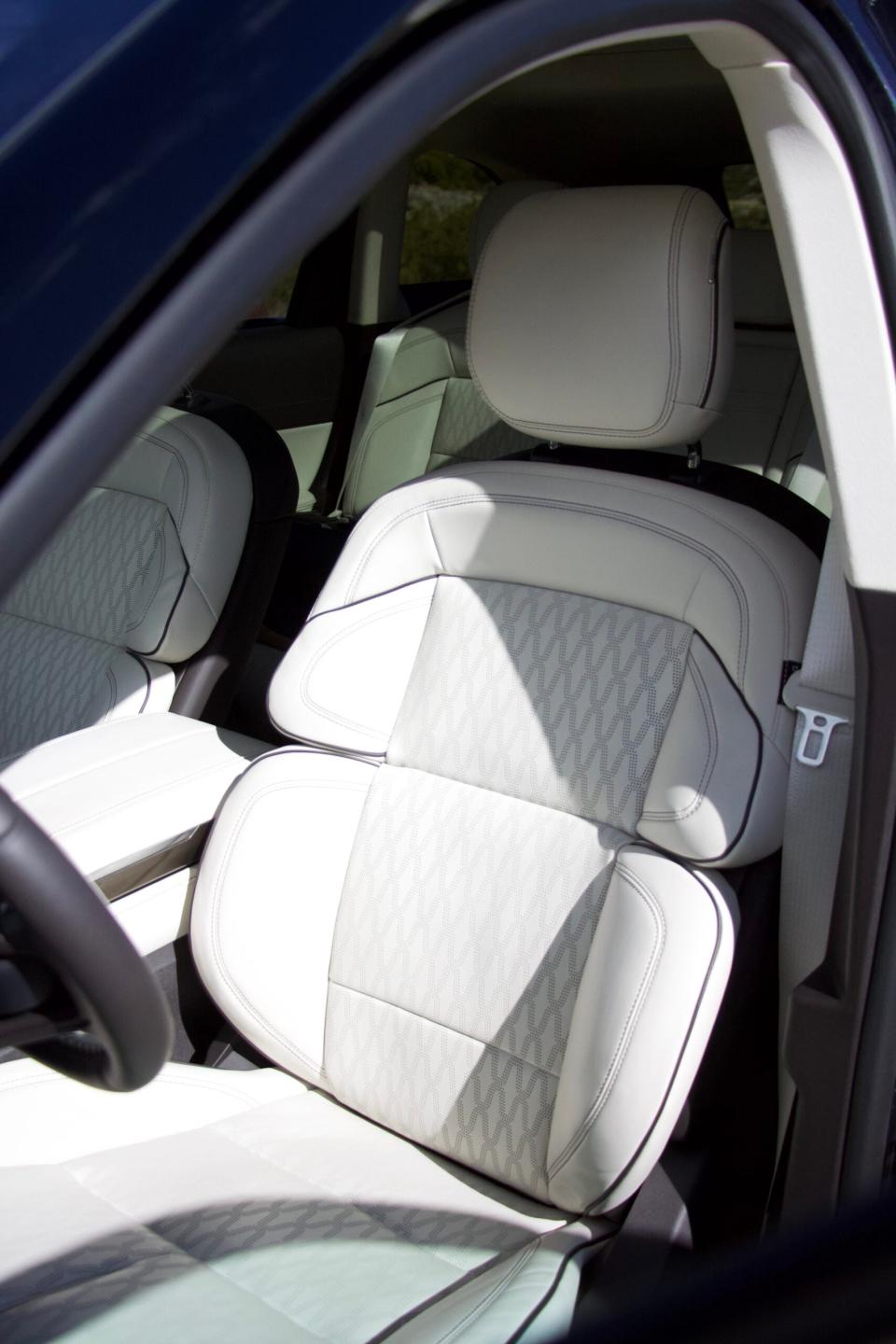2024 Lincoln Nautilus First Drive Review: Is ‘Good’ Good Enough?

“Bigger is better” has been the unofficial motto of American luxury cars—and, arguably, America itself—since at least the Cadillacs and Lincolns of the 1950s. These days, though, it’s screen size we’re concerned about rather than exterior dimensions, and fittingly, Ford’s luxury arm has set out to conquer that frontier with a 48-inch panoramic display in the 2024 Lincoln Nautilus.
Stepped into the dash and sitting at roughly eye level, the Android Automotive-powered ultra-widescreen is the centerpiece of Lincoln’s redesigned and now Chinese-built midsize crossover. It’s a clever and surprisingly unobtrusive piece of kit, but I’m not sure it’s enough to save the Nautilus—and Lincoln as a whole—from the throes of mediocrity.


The Basics
OK, maybe mediocrity is a bit harsh. The Lincoln Nautilus is a nice car. And it should be, with a starting price of $52,655 which swells to $77,990 when you select the range-topping Black Label hybrid model.
The Nautilus comes in three main trim levels: Premiere, Reserve, and Black Label, all of which offer two powertrain choices: a turbocharged 2.0-liter four-cylinder paired with an eight-speed automatic transmission, or the same 2.0-liter configured as a conventional hybrid with two electric motors and a continuously variable automatic transmission. All-wheel drive is now standard.




All models come with the panoramic display from the get-go. The Premiere and Reserve trims offer optional “II” packages which unlock four years of Ford’s BlueCruise hands-free highway driving aid, a 14-speaker Revel sound system, and Lincoln’s new “Digital Scent” experience, among other features. The Reserve’s optional “III” package bumps the speaker count to 28 and adds 24-way “Perfect Position” front seats—both standard equipment on Black Label cars. Other Black Label upgrades consist mostly of exclusive interior and exterior themes and style features.
Driving Experience
I drove both powertrains in Black Label trim, and the hybrid is the one you want. For a nominal $1,500 upgrade on any trim level, you get 50 more horsepower and six additional combined mpg. It’s not that the gas-only Nautilus is bad, but the power difference off the line is noticeable, as are the engine’s higher revs and effort level without the aid of electric motors.
The eight-speed automatic offers no means to manually select gears apart from a “low” button, and it hunted for the right gear on our mountainous test loop. By contrast, the hybrid’s e-CVT kept the engine and my heart rate relaxed, as they should be in a Lincoln.



Body motions are well-controlled through sweeping turns thanks to adaptive damping, and the Nautilus’ steering is accurate and well-weighted for daily driver duty. I noticed a slightly squishy, hard-to-modulate brake pedal around town in the hybrid, but by the end of my drive, I’d gotten used to it and could manage smooth stops.
I got to try BlueCruise for the first time on the highway and came away impressed. The semi-autonomous highway driving aid only works on divided highways at this point, but it allows for hands-free operation and even lane changes, provided you tap the turn signal once. It operated smoothly on my watch, but I’d need a longer road trip to really get familiar.
Let’s Talk Screens
The 2024 Nautilus has two screens: An 11.1-inch touch display in the center console that’s pretty standard fare these days, and then the 48-inch megalodon unfurling across the dash. I expected the second display to be a distraction, but the project manager for the Nautilus’ infotainment explained it’s actually designed to be the opposite, keeping drivers’ eyes on the horizon rather than down on a dash tablet.


In practice, it mostly works! The left side of the screen contains driving information like speed, fuel level, and Google Maps directions, while the right side is configurable with widgets for music, weather, time, and more. It’s right in your field of vision, and I found myself referencing it without taking my eyes off the road. It’s not a perfect experience, however; you still have to interact with the touchscreen to control the HVAC (sigh), and the hard button for drive mode selection just brings up a touch menu on which you must tap again. A simple rocker switch would’ve been preferable.
I’m not clamoring for this in every car. Still, as a centerpiece of Lincoln’s design philosophy and a usable piece of tech, it’s not bad. I commend Lincoln for making it standard and not forcing buyers to step up to a fancier trim level to get it.
The screen and infotainment system are also the interface for Lincoln’s “Rejuvenate” mode, a feature that will be available on the 2025 Nautilus and as a software update on 2024 models. Only used at a stop in park, Rejuvenate reclines the driver’s seat and starts a massage while playing soothing imagery on the screen, music from the speakers, and activates the “Digital Scent” to give you a whiff of forest pines while you avoid your family for a few minutes. While gimmicky, it’s a neat showcase of the car’s various creature comforts and, per Lincoln, a way to “take advantage of stationary moments in the car.” (Read: It’s for people in unhappy marriages who can’t admit they need therapy.)
The Competition
The upscale midsize crossover segment is a crucial one. The Nautilus faces competitors like the Genesis GV70, Lexus RX, Volvo XC60, BMW X3, and Mercedes-Benz GLC. The Nautilus starts slightly higher than the RX ($49,950) and the GV70 ($46,500). Lincoln’s strategy is to price the base car around those models while offering second-row legroom and optional high-end features more in line with larger models like the BMW X5 and Mercedes GLE.


Gas Nautilus models have been on sale for a couple of months now, and Lincoln says it’s pulling younger buyers out of Lexus, Volvo, and Genesis products. However, I think Lincoln may have painted itself into a bit of a corner. It’s not as satisfying to drive as the Germans and Lexus buyers are fiercely loyal, so I’m not really sure who Lincoln’s target customer is. The hybrid model makes for a compelling alternative for an RX hybrid, but optioned up is no cheaper and doesn’t come with Lexus’ reputation for quality.
The Early Verdict
The 2024 Lincoln Nautilus is a good car. It’s modern, stylish, comfortable, and efficient with the available hybrid powertrain. Unfortunately, in this segment, good isn’t good enough to shake people from strong brand affinities and deep-seated preferences.
As it’s currently priced, the Nautilus isn’t a value play. It’s a luxury one, and I’m not sure scented candles and giant displays are going to wow people out of Lexus showrooms and into Lincoln ones. I hope to be proven wrong, as Lincoln needs this win badly to escape the stigma of cash incentives and Uber Black pickups.
You come at the king, you best not miss.
2024 Lincoln Nautilus Specs | Gas | Hybrid |
|---|---|---|

Got a tip? Send us a note: tips@thedrive.com

 Yahoo Autos
Yahoo Autos 